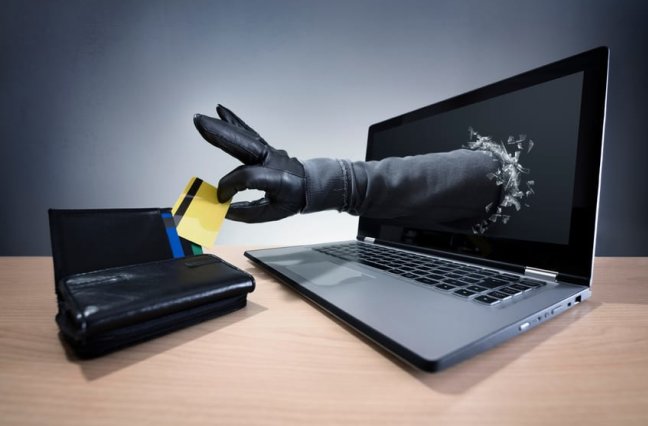25 Indicators of Fraud on Inbound Calls
Here are 25 indicators of fraud on inbound calls in call centers.
Solutions
Products
Ingest omnichannel customer interactions, from audio and screens to surveys, for complete visibility and analytics.
AI virtual agents, real-time multilingual translation, and event-based customer feedback drive smarter, personalized CX initiatives.
Customers
Solutions
Products
Customers
Resources
Company
Fraud is one of the costliest risks businesses face every day. With so much emphasis being placed on cybersecurity and fraud prevention online, cybercriminals are changing their efforts by targeting businesses via telephone conversations. Call centers have seen a significant increase in fraud according to Pindrop Labs’ being of a fraudulent nature in 2016, a 113% increase over 2015. These statistics are alarming and forcing many call centers to proactively implement a system that detects and prevents fraud. But there is a way to safeguard your customers and your business – speech analytics.
Download our report to learn how to prevent fraud and preserve CX using AI!
Fraudsters use many approaches to trick call center agents and retail associates. Most don’t even know they’ve been a victim of fraud until after the incident is over. Some fraudsters build a rapport with a particular agent or retail associate over time before requesting that they send a financial sum to their bank account. They use tactics like flattery to build trust and name drop authorities in the business to instill fear.
Other fraudsters call pretending to be a customer and slowly, over a few contacts, they change passwords and make updates to the account, so they have full control before making substantial purchases. The approach a fraudster chooses to take depends on the industry and type of calls you manage daily.
While it is impossible to prevent 100% of fraud cases, there are steps to can take to mitigate the risk. Because call center fraud is a newer threat for businesses, some employees may not understand or know the red flags. It is vital that you properly train and guide them on how to identify fraud and what steps to take if they feel unsure about a request.
You should also train them on any new security policies or software features you implement. In many cases, when employees don’t understand why management is making changes to their procedures, they end up resenting the change because it places more work on them. By thoroughly explaining the changes and why they are important, they are more likely to follow through with the new procedures.
A typical procedure is to ask questions at the start of the call to confirm the person’s identity. Too often these questions are “What is your address?” or “Can you confirm your phone number?” The problem with these types of questions is that the information is readily available online and fraudsters can search for it before making the call. Add an additional layer of security by creating unique questions such as establishing a customer pin.
Speech analytics software is an innovative solution that many businesses utilize. It captures voice and text conversations and transcribes them into a searchable database. It is often used to automatically score overall performance by measuring key performance indicators (KPI’s).
It is increasingly becoming a popular tool to detect fraud because you can establish rules to identify fraud-like behaviors, conversations, and even detect when a caller is lying so that steps can be taken to mitigate the risk.
Whether you already have a speech analytics solution in place or are ready to invest in a new solution, here are 5 steps take to use it effectively to detect fraud.
1. Review past fraudulent calls.
Manually review all previous known fraudulent calls, so you better understand who a fraudster is, what techniques they use, and how they build rapport over time. Take note of specific questions asked and phrases they use such as “keep this call private” or how they introduce themselves. Other key items to look for ongoing trends include time or day of the week a call is made or reason for the call.
2. Identify keywords you want to listen for.
Review the data and trends to determine which keywords and phrases you want to create notifications for. You can even create a flag if the caller has contacted you more than once in a certain number of days.
3. Customize a fraudulent scorecard.
Just like you can create a scorecard to evaluate performance, you can do the same to identify potential fraudsters. By assigning a value to phrases, keywords, and voice acoustics, the speech analytics software will assess and assign a grade to the call. The higher that score is, the more likely it’s a potential fraud scenario.
4. Integrate scorecard with real-time guidance.
Real-time analytics can provide guidance while on the call if the call is flagged as potential fraud. By having this on-screen guidance, they are less likely to take a misstep and end up a victim of fraud.
5. Track, update, and track some more.
To perfect fraud detection, you need to track the parameters you set and identify if they are creating false positives or overlooking fraudsters. Continue to adjust and track until you reach the desired outcome.
Fraud is too risky to ignore. By establishing procedures and using a speech analytics solution that integrates with every touch point, you are less likely to become an ongoing target for fraudsters.


CallMiner is the global leader in AI-powered conversation intelligence and customer experience (CX) automation. Our platform captures and analyzes 100% of omnichannel customer interactions delivering the insights organizations need to improve CX, enhance agent performance, and drive automation at scale. By combining advanced AI, industry-leading analytics, and real-time conversation intelligence, we empower organizations to uncover customer needs, optimize processes, and automate workflows and interactions. The result: higher customer satisfaction, reduced operational costs, and faster, data-driven decisions. Trusted by leading brands in technology, media & telecom, retail, manufacturing, financial services, healthcare, and travel & hospitality, we help organizations transform customer insights into action.

